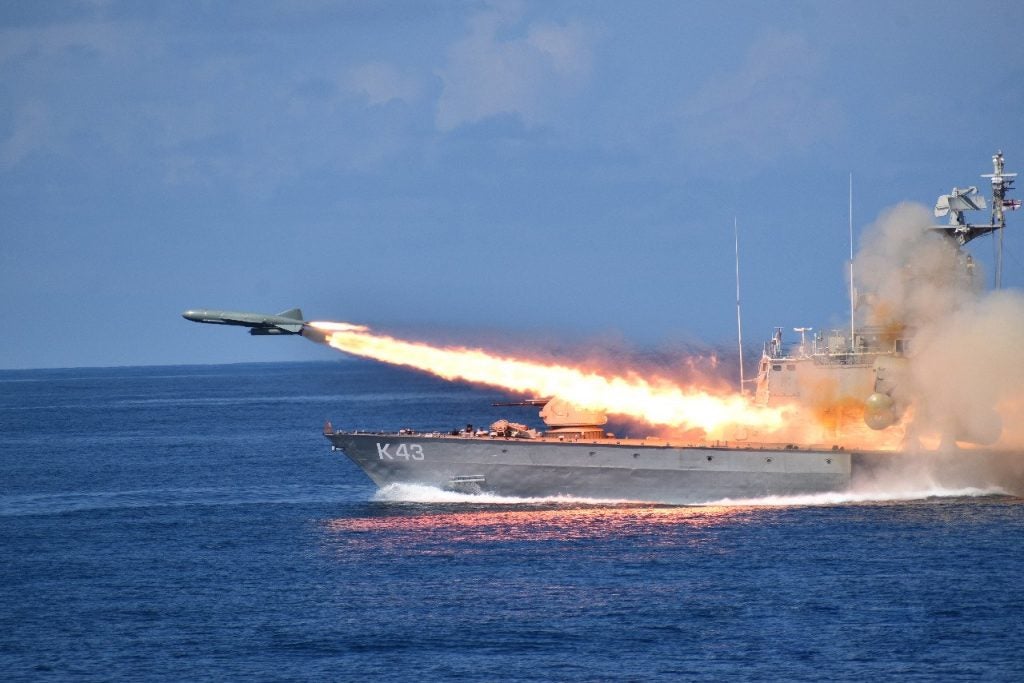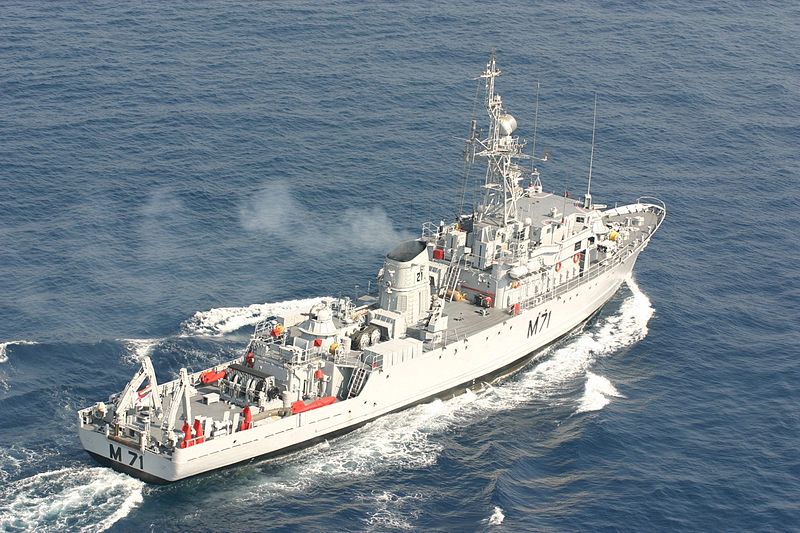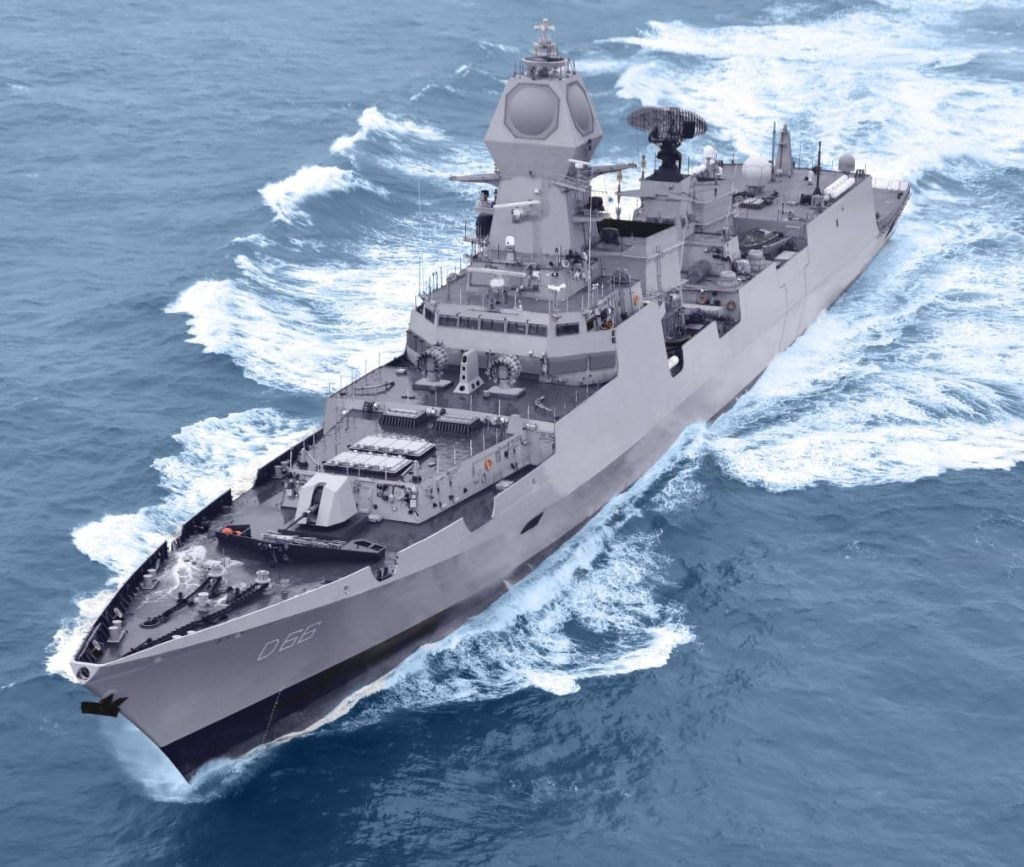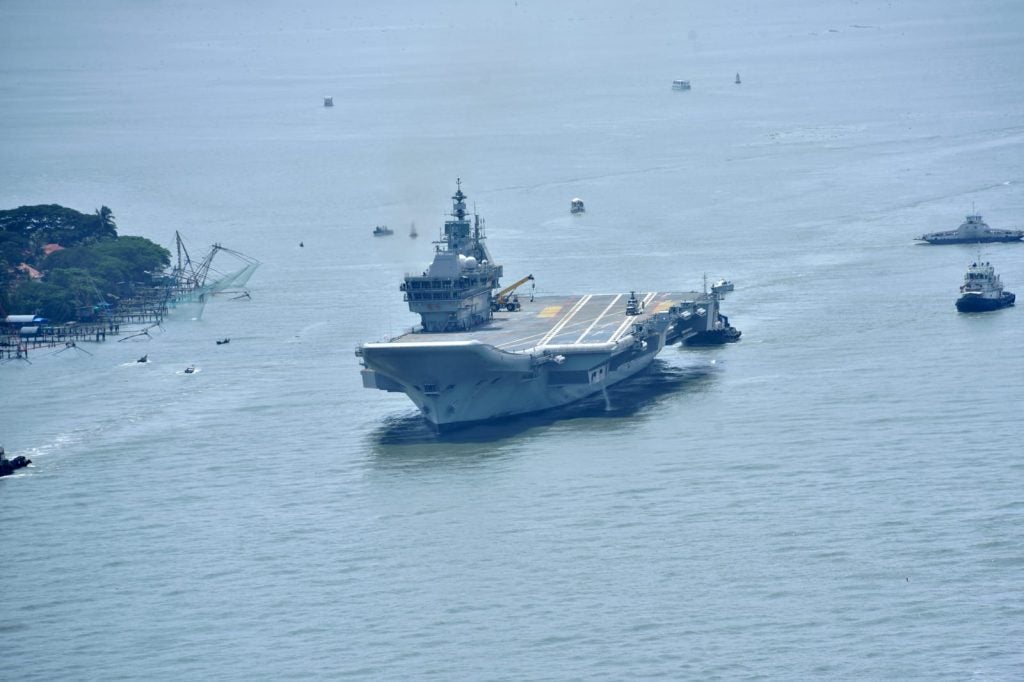The Next Generation: An Overview Of Indian Navy’s Surface Fleet Plans
India’s defence budget for 2022-23 had allocated a record amount of $6.19 billion for capital procurement by the Indian Navy, with an eye on attaining the planned fleet strength of over 170 ships and submarines by 2027. Project-17 Alpha (P-17A) class frigates, four follow-on Talwar class frigates and Project-15 Bravo (P-15B) destroyers are the major surface combatants currently being constructed for the Indian Navy. Smaller vessels include Anti-Submarine Warfare Shallow Water Craft (ASW SWC) and survey vessels among others. The Indian Navy, in accordance with its Long Term Integrated Perspective Plan (LTIPP) and Maritime Capability Perspective Plan (MCPP), has over the years indicated the next generation of vessels it requires. This article will provide an overview of the known plans for the Indian Navy’s future manned surface fleet.
Small Surface Vessels and Auxiliary Ships
The first among the next generation projects is the Next Generation Missile Vessel (NGMV). Six of these are to be built by Cochin Shipyard Limited (CSL) which won the bid in 2021. CSL CMD Madhu S Nair told investors in May 2022 that negotiations with the Navy have been completed adding that while CSL expected award of contract by June, it may be delayed towards September. The six vessels, costing about $1.3 billion, would take over eight years to build. These would be armed with eight BrahMos missiles, VL-SRSAM for air defence and various guns.

A contract for 11 Next Generation Offshore Patrol Vessels worth over $1.2 billion would be formally awarded this year. Bids were opened in February and Goa Shipyard Limited (GSL) was L1 while GRSE was L2. GSL would build seven vessels while GRSE would build the other four. GRSE aims to build all four ships by 2029.
The Defence Acquisition Council on June 6 approved the procurement of Next Generation Corvettes (NGC), worth an estimated $4.6 billion. A Request for Information (RfI) in 2016 had called for procurement of seven such 120m long vessels, armed with at least eight BrahMos missiles, a 76mm gun, AK-630 CIWS, torpedos and MRSAM missiles. However, the total estimated cost for the NGCs was quoted at $2-3 billion as recently as February 2022, which was substantially lower than the current estimate. While media reports indicate that eight NGCs will now be procured, no official figures have been provided. A Request for Proposal (RfP) for NGC will be released by the end of 2022. Mazagon Dock Shipbuilders Limited (MDL) and GRSE are expected to be among the contenders.
A list of acquisitions planned by the Navy in 2022-23 was presented to a Parliament committee in late 2021. This includes Next Generation Survey Vessels, a class of at least seven Next Generation Fast Attack Craft for which RfP is expected in 2023 and an unknown number of Next Generation Fast Interceptor Craft. Major auxiliaries planned include a National Hospital Ship for which an RfI was issued in May and a long delayed contract for five Fleet Support Ships. These ships worth $2.6 billion would be built by Hindustan Shipyard with technology transfer from Anadolu Shipyard in Turkey. A contract is expected to be signed by the end of 2022. Besides these, a number of smaller auxiliary vessels are also required by the Navy.

The Minesweeper Gap
Conspicuous by its absence in the list was the requirement for Mine Countermeasure Vessels (MCMV). The Navy has been attempting to procure 12 MCMVs since 2004. Repeated failures, which left it without any minesweepers by 2019, prompted the Navy to issue an RfI for leasing three to four MCMVs in 2021, but no progress has been reported. The Navy is currently reliant on Thales mine countermeasure clip-on sweeps. It also operates Liquid Robotics Waveglider buoyancy gliders which may have additional MCM capability. Liquid Robotics did not respond to a query by Overt Defense regarding this. With requirements having been projected for high endurance autonomous underwater vehicles with MCM modules, portable UUVs for ordnance disposal, expendable underwater mine disposal systems, unmanned surface vessels with MCM modules and more buoyancy gliders, the Navy may be looking to offset its lack of minesweepers with distributed unmanned MCM capability.
Aircraft Carriers
The Indigenous Aircraft Carrier (IAC) Vikrant is likely to be inducted into the Navy in August. Media reports have indicated that the planned IAC-2 carrier is likely to be put on the back burner, with the Ministry of Defence (MoD) likely to focus on construction of nuclear powered attack submarines. Nonetheless, the planned list of acquisitions includes the IAC-2 and the Navy is going ahead with design activities. An RfP for four Landing Platform Docks (LPD) worth an estimated $3.3 billion is expected by 2023. The vessels, capable of carrying over a dozen helicopters, would be completed in eight years after award of contract. An RfI issued in 2021 called for the LPDs to be armed with 16 surface to surface missiles and 32 VL-SRSAM missiles. Other requirements resemble those of traditional LHDs rather than LPDs. The LPDs and IAC-2, which would have Integrated Electric Propulsion (IEP), will form the core of the Navy’s shipborne naval aviation capability.
Large Surface Combatants

The future surface fleet would be spearheaded by a class of Next Generation Destroyers (NGD). MDL transcripts from 2021 had pegged five NGDs at $6.5 billion and expected an RfI by 2025. The program was described as being at a conceptual stage. Yet progress is expected soon as NGDs were also present in the planned acquisitions list for 2022-23. MoD’s Technology Perspective and Capability Roadmap released in 2018 had indicated that the Navy has a requirement for 5-10 “NGD/Next Generation Frigates (NGF)”. However, it was unclear then if both NGD and NGF are to be pursued.
Overt Defense understands that in June, the MoD had asked the industry to provide their manufacturing readiness for dozens of new land based and naval equipment. This includes Project-17 Bravo (P-17B), which will be a follow-on order for P-17A class frigates. It also includes both the NGD and NGF separately, confirming that both projects are on the anvil. It is possible that the NGF project may be initiated only after progression of P-17B, which itself is likely to be contracted only by 2025-26 when all P-17A frigates would be ready for service.
NGD and NGF are likely to be equipped with universal vertical launchers, being developed by DRDO, which will be capable of launching all indigenous missiles. The primary ship borne radar is expected to be Long Range Multi Function radar (LRMFR), which is under development. These ships may also be equipped with hypersonic missiles, long range surface to air missiles, directed energy weapons and ‘Torpbuster’ anti-torpedo torpedoes, all of which are being developed. Ballistic missile defence capability may also be incorporated. A defining feature of these ships could be the absence of the ubiquitous RBU-6000 anti-submarine rocket launchers. With better stealth features and the possibility of IEP, timely execution of NGD and NGF could potentially allow the Indian Navy to maintain its edge in the Indian Ocean Region despite the increasing cooperation between its adversaries.
The opinions expressed in this editorial are those of the author and do not necessarily reflect the opinions or views of Overt Defense

